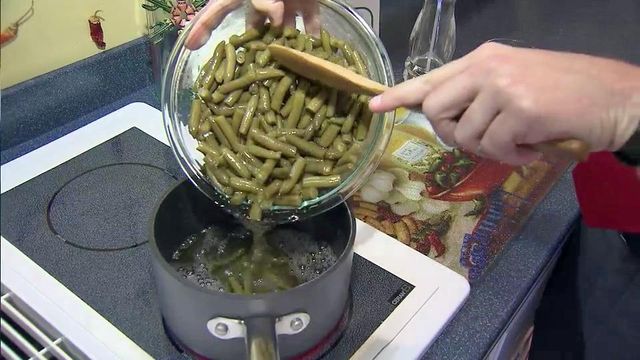Want to be healthier? Say sayonara to surplus salt
Human bodies need sodium, but most people get too much. National guidelines say people should get about one teaspoon per day. Due to health issues, some people should get even less.
Posted — UpdatedHuman bodies need sodium, but most people get too much. National guidelines say people should get about one teaspoon per day. Due to health issues, some people should get even less.
Doctors ask patients to be stingy with the salt shaker, but the majority of people’s daily salt intake comes from sodium already in the foods they buy.
For example, a frozen turkey and gravy dinner can contain up to 800 milligrams of sodium. That's about a third of the daily maximum of about 2,300 milligrams. A cup of chicken noodle soup can contain more than 700 milligrams of sodium.
Hypertension is a huge problem and affects 30 to 40 percent of Americans. Their recommended sodium limit is set at about 1,500 mg per day, or half of the recommended maximum. U.S. guidelines also recommend the same restricted sodium diet for people ages 51 and older, African-Americans as well as people with diabetes and chronic kidney disease.
The average American takes in about 3,400 milligrams of sodium per day, well above the recommended doses for good health. Health problems associated with excessive salt intake include high blood pressure, which makes the heart work harder and can lead to heart disease, heart failure, stroke and kidney disease.
Here are some ways to cut back on your salt intake:
- Track your sodium intake. Look at the labels and try to get a handle on how much you are consuming.
- Go with fresh vegetables. Second best choice is frozen veggies, and the least preferred is canned which contain a lot of salt to preserve the shelf life. If you must use canned vegetables, rinse them in water or buy the ones labeled "no salt added" or "low sodium."
- Packaged deli meats should stop you dead in your tracks. Two slices of salami can contain almost 400 milligrams of sodium. Be sure to read the labels.
- Be careful with the marinades. One tablespoon of soy sauce can contain over 1000 milligrams of sodium.
- Look at the serving size. The sodium content on the nutritional label is typically for one serving not the whole pack.
- Eat at home as much as possible.
- Try other flavors, such as garlic, onions, red pepper and black pepper to flavor your food without the negative effects of excessive sodium.
- Speak with your doctor and a registered dietitian about the right balance for you.
• Credits
Copyright 2024 by Capitol Broadcasting Company. All rights reserved. This material may not be published, broadcast, rewritten or redistributed.





